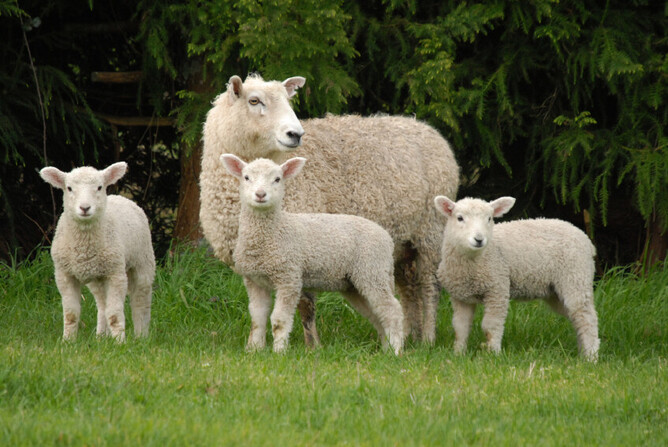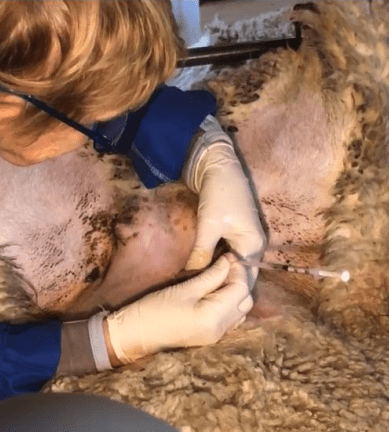Have you considered using E.T. to get fast genetic gains for your flock? Here's how it works:
Ovine embryo transfer (E.T.) has been around for a while now and creates a fast way of improving the genetic gains of a sheep flock.
The process provides the possibility for a top ewe, with prime genetics, to reproduce a lot more lambs than what she would be able to naturally.
There are two options available:
You can buy embryos to introduce new genetics to your flock and implant them in your recipient ewes: 'Embryo Transfer' (E.T.).
You can use your own donor ewes with excellent genetics to enhance the genetic gains within your flock, using the process of 'Multiple Ovulation and Embryo Transfer' (M.O.E.T.).
How does it work?
The process is intensive and demands a high level of attention to detail.
When using both your own donor and recipient ewes, they should be in excellent condition and health. It is also important that they are not exposed to stressful situations in the weeks leading up to, and directly following, the E.T. process.
Donor ewes:
The donor ewes, who the embryos are harvested from, undergo a process of super-ovulation. This takes 26 days and will allow for the harvest of between 1-12 embryos. These can then be implanted in multiple recipient ewes, who will carry and raise the lambs.
The collection of the embryos from the donor ewes happens on the same day as their implantation into the recipient ewes.
The donor ewes will undergo the following 26 day programme:
Day -7: Injection
Day 0: CIDR insertion
Day 8: Change CIDRs
Days 9, 10, 11: 2x injections per day
Day 12: 2x injections; CIDR removal; introduction of harnessed teaser rams
Day 13: 2x heat detection; AI or pen mating
Day 19: Surgery to harvest the embryos.
Recipient ewes:
The recipient ewes are the surrogate mothers who will receive the embryos and do not provide the genetics for the future lambs.
They are four-tooth or six-tooth ewes and will have to be excellent mothers who have successfully raised lambs in the past, and have good teeth.
Recipient ewes undergo a 19 day programme:
Day 0: Insertion of CIDR
Day 11: Removal of CIDR; introduction of harnessed teaser rams
Day 12: 2x heat detection
Day 19: Surgery to implant the embryos.
Success rate?
The success rate of a pregnancy, after collecting embryos and implanting them fresh on the same day, is around 85%.
The process of using frozen embryos is a bit more straight forward. The recipient ewes will go through the same process as prescribed above, but, the embryos are thawed on the day of implantation and implanted in the recipient ewes as singles and twins.
The success rate of using frozen embryos is between 60% and 70% of live lambs born.
Embryo transfer is a very intensive process, but provides fast genetic gains for your flock. Get in touch with your vet if you think this would be a suitable option for your farm.
Sources: Julia Aspinall, Genetic Gains Ltd.


